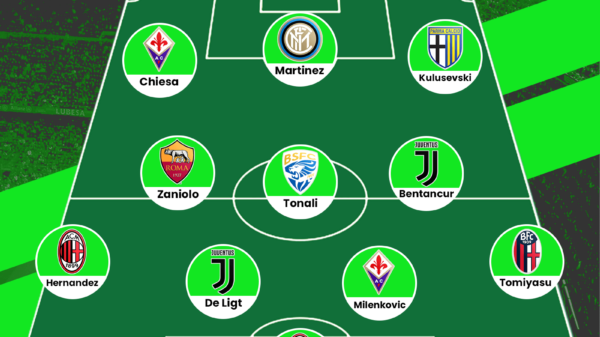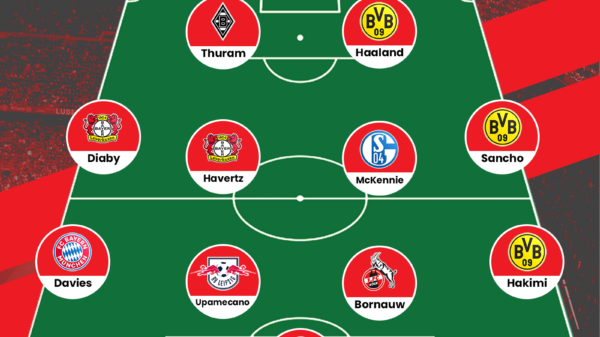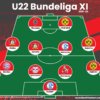Nicolas Pernigotti writes a detailed tactical analysis about the Champions League match that ended Juventus 2-2 Bayern Munich.
On Tuesday, the 23rd of February, Juventus played host to Bayern München in Turin. It was touted to be a great game, and certainly did not disappoint. After going 2-0 down, Juventus showed great psychological strength, recovered and scored two goals of their own to level the first leg of Champions League. During the first 60 minutes, Bayern exercised great control through a strong possession game and an effective pressing scheme involving man to man orientation. However, Juventus did improve significantly, showing more stability with and without the ball.
Line ups

Made using Tactical Pad
Juventus: Buffon; Evra, Barzagli, Bonucci, Lichtsteiner; Marchisio (Hernanes, 46′), Pogba, Khedira (Sturaro, 69′), Pogba; Dybala (Morata, 75′), Mandzukic.
Bayern Munich: Neuer; Bernat (Benatia, 74′), Alaba, Kimmich, Lahm; Vidal, Thiago, Robben, Douglas Costa (Ribery, 84′), Muller; Lewandowski.
Allegri´s 4-4-2
Allegri chose to organize his team in a 4-4-2 formation, which depending on the situation would become a 4-4-1-1 or 4-4-2.
Acting in a defensive block, Juventus used a zonal marking scheme with some man marking with the objective to exercise better control and allow fewer movements from Bayern. Juventus pressed in some cases, but only intermittently as they more often sat in a deeper block. When executed, the press was not fully effective either, since Bayern worked well to bypass the pressure from Mandzukic and Dybala.
In possession, there were some signs of asymmetry from Juventus. On the left, Pogba would move in and supported the central attacks, while Evra moved further up the pitch. On the other flank, Cuadrado acted as a more orthodox winger with Lichtsteiner behind him. Meanwhile, Marchisio was located near the central defenders as usual, while Khedira was more of a traditional number 8. In the attack, pressing from the front remained relatively high.
Bayern maintain absolute control with the 4-3-3
Bayern´s line up suggested a possible 4-3-3, however, as soon as the game started it was clear that this was not the case. In central midfield, we saw some asymmetry as Thiago played deeper to support the recirculating ball while Thomas Müller was deployed much higher alongside Lewandowski. On the wings, Douglas Costa found himself in many situations of isolation on the left flank, while Robben played an important role on the right.
The most interesting aspect of their structure, however was that of the centre backs. Both Bernat and Lahm were directed to patrol the inside of their respective spaces, supporting the possession through connections and offering to help the horizontal movement of the ball. The duo helped create triangles around the field, as their strategic positioning in spaces proved beneficial.
The differences in the guidelines were relevant to the functions of support. On the left side, Bernat constantly generated space for Thiago. On the right side, the vital support of Lahm created half spaces and helped create better connections.
The accumulation of the Bavarians was particularly strong by the motion of Vidal. They were consistently able to bypass pressure exerted by Manduzkic and Dybala. In midfield the ex-Juventus man Vidal became the deepest Bayern player, as both Kimmich and Alaba moved further forward to create an inverted triangle.
Crucial change of pace in the second half
Although much improved almost immediately after the interval, Juventus were particularly better after Robben extended the Bayern lead. The tempo changed and Juventus gradually took control of the game. Despite Bayern exercising a high degree of control over most of the first 60 minutes, the momentum of the game changed almost completely and the stability of the Bavarians was now absent since the game became more chaotic.
Juve pressure became more active and aggressive, Mandzukic and Dybala advanced to press much more frequently and with greater intensity. In addition, Hernanes and Khedira advanced up the field to apply pressure to Bayern. In doing so, they interrupted the construction game of Guardiola´s team, and Bayern were less able to advance the ball cleanly and were not able to move with the same levels of control.
In the end, the home side greatly improved, as it benefitted from better access through the middle that worked well against Bayern pressure. Lahm in particular was less able to develop access to the midfield. Juventus improved their circulation of the ball, and the structure was adapted to be slightly more effective against Bayern´s defense.
Conclusion
In terms of quality this was “THE” match of the round of Champions League and did not disappoint, as we saw an interesting battle between two strong teams tactically and technically. The Bayern dominance in the first half was nullified in the second half of the game, but mainly after Robben’s goal. Allegri’s team got back into the game by getting higher up the pitch, and at the same time improved their ball circulation.
Written by Nicolas Pernigotti
- Tactical Analysis: Juventus 2-2 Bayern Munich | Allegri’s 4-4-2 and critical change of pace in second half - February 29, 2016
- Tactical Analysis: Monchengladbach 1-3 Dortmund | Effective counter attacks work for Dortmund - January 28, 2016
- Tactical Analysis: River Plate 0-3 Barcelona | Barca’s enterprising play too much for River - December 28, 2015
































































